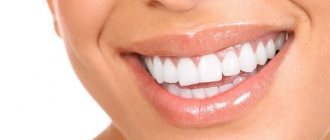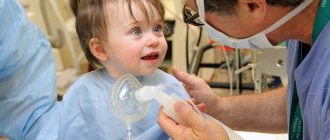The drug belongs to anticongestants of plant origin, with an antiseptic and local anti-inflammatory spectrum of action. The combined medication contains natural ingredients, a mixture of vegetable and essential oils. O=Treatment is carried out after a diagnostic examination to determine the type of microflora that has penetrated the nasopharyngeal mucosa.
Composition of Pinosol and release forms
You can buy Pinosol at the pharmacy either in the form of drops or as a spray or ointment. The main medicinal components in Pinosol are vegetable oils: pine, mint, eucalyptus. In addition to oils, the product contains thymol, guaiazulene and alpha-tocopherol acetate. Regardless of the release form, the product has a pronounced aroma of mint and eucalyptus.
As auxiliary elements, Pinosol contains macrogol and apricot oil glycerides, which ensures moisture retention on the walls of the mucous membranes.
Indications for use
As a rule, Pinosol is prescribed after operations on the nasal septum, especially if the postoperative period involves wearing cotton-bandage swabs, which cause drying out of the mucous membranes of the nasal cavity.
For atrophic rhinitis, Pinosol has also shown its effectiveness. The destroyed tissue lining the walls of the mucous membrane is not able to provide proper hydration, which is why the inflamed areas remain dry and crusty. Pinosol gently protects the nasal cavities from drying out, provides humidification and warming of the inhaled air, which has a beneficial effect on gas exchange processes in the lungs, during which carbon dioxide is removed from the body and oxygen penetrates to organs and tissues.
Any inflammatory processes accompanied by drying out can be treated in combination with Pinosol to speed up the healing process and prevent the development of complications.
Within 5-7 days, the runny nose should disappear. And with atrophic rhinitis, the mucous membranes will be able to restore their protective functions during this period of time. If this does not happen, and after the 7th day of use there is no recovery, you must contact a specialist for qualified help or correction of the prescribed therapy.
Pinosol: instructions for use
Pinosol in the form of a spray is sprayed into each nasal passage once. The oily texture settles on the walls and does not allow the product to flow down the nasopharynx into the esophagus. In case of a pronounced inflammatory process, irrigation is repeated every 1.5-2 hours. When the symptoms subside, Pinosol is injected three times a day into each nostril once.
When using ointment, apply a small amount to a cotton swab or finger and distribute it shallowly over the mucous membrane. To achieve the desired therapeutic effect, it is enough to apply the ointment to the walls of the anterior nasal passages and to the septum. For acute rhinitis, use ointment every two hours, and for moderate symptoms, three times a day is sufficient.
Drops are suitable for children. Unlike sprays, they do not create pressure in the nasal cavity. You need to instill 11 drops into each nostril at intervals of 2 hours. When the symptoms of the disease cease to be pronounced, it is enough to instill Pinosol into the nose in the morning and evening.
general information
The component composition reduces the level of swelling and inflammation, reduces the viscosity of the mucous secretion produced by the respiratory tract. The product has antibacterial activity against certain gram-positive and gram-negative bacteria:
- to Staphylococcus aureus;
- pyogenic, epidermal streptococcus;
- micrococcus luteus;
- E. coli;
- bacilli echinocereus.
The drops have a registered antimycotic effect, helping to fight mold and yeast.
Medicine to combat rhinitis is also made in the form of a spray, cream or ointment. The drug is sold without a doctor's prescription and is stored in a dark room protected from direct sunlight at a temperature of 15-25 degrees. The expiration date is indicated on the packaging:
- for drops – 3 years;
- for ointments, sprays, creams – 2 years.
Before carrying out therapy, you need to check the body's individual reactions to allergies. After a single use, wait 20 minutes, checking the condition of the mucous membranes and skin.
Nasal drops are manufactured in brown glass bottles with a volume of 10 ml, on the top of which there is a rubber pipette with a cap. The medicine is presented as a solution of a blue or greenish-bluish tint with a pronounced eucalyptus-menthol aroma.
Features of the action of Pinosol
Pinosol is a medicine that helps local immunity fight the disease. By moisturizing the mucous membrane, the product increases the body's resistance to pathogenic microorganisms. Organs and tissues receive more oxygen due to the fact that, despite the inflammatory process occurring in the upper respiratory tract, inhaled portions of air are moistened as they pass through the nasal sinuses and heated to the required temperature.
In order for the gas exchange process to take place in the lungs, the air must be humidified to 100% and warmed to body temperature, which is what Pinosol provides. The remedy for the common cold does not contain vasoconstrictors, which means that Pinosol does not relieve nasal congestion. Only thanks to the mint included in the composition, a slight vasoconstrictor effect of short-term action can be obtained. Therefore, if you need to restore nasal breathing and get rid of swelling, you must first use vasoconstrictor drops. After the swelling subsides and inhalation/exhalation is not difficult, Pinosol can be used to moisturize the passages and treat atrophic rhinitis.
The use of the product in nebulizers is permissible, but only if the principle of operation of the device is not interfered with by the oily base of Pinosol. Most ultrasonic inhalers do not involve the addition of oily liquids to the reservoirs, since their composition interferes with the correct operation of the membrane. If the nebulizer allows the use of Pinosol, the particle size of the generated steam should be maximum so that the product settles on the walls of only the upper respiratory tract. Do not forget about the risk of developing allergies, therefore, before adding Pinosol to the inhaler reservoir, it is necessary to conduct an allergy test.
Use of the drug Pinosol in the complex treatment of acute respiratory diseases in children
Infectious diseases are caused by pathogenic microorganisms - viruses, bacteria, protozoa. Common features for most infectious diseases are the possibility of transmission of the pathogen from a patient to a healthy one and the possibility of their mass (epidemic) spread. As a result of interaction with the pathogen, a set of physiological (adaptation) and pathological processes develops in the body, accompanied by a violation of homeostasis. The entry gates for ARI pathogens are the mucous membranes of the upper respiratory tract (nose, pharynx, larynx). Inflammation develops in the mucous membranes of the respiratory tract, accompanied by vasodilation with increased permeability of the vascular wall and increased exudation. Clinical manifestations of these processes are catarrhal symptoms: runny nose, cough, hyperemia of the mucous membranes of the tonsils, pharynx, etc. Swelling of the nasal mucosa can be a consequence of inflammation, viral or bacterial, or an allergic reaction to respiratory allergens. A special condition, which is manifested by swelling of the turbinates of a non-inflammatory nature, should be considered vasomotor (neurovegetative) rhinitis. It should be noted that rhinitis, especially in young children, can cause sleep and appetite disturbances. At the same time, in newborns and infants, difficult nasal breathing can lead to refusal of breastfeeding. The main bacterial pathogens of acute respiratory infections are pneumotropic microorganisms, including pneumococcus and other gram-positive cocci, Haemophilus influenzae, Moraxella catarrhalis, atypical pathogens (mycoplasma, chlamydia), etc. Primary viral infection often leads to activation of endogenous opportunistic flora [8]. The reason for the easier transformation of this microflora into pathogenic in a number of children is associated with individual characteristics of the immune response, disruption of the barrier function of the respiratory tract, decreased local immunity, as well as superinfection with bacterial agents [3]. Infectious inflammation is the main pathogenetic component of the clinical manifestations of ARI. The development of inflammation of the mucous membrane of the upper and lower respiratory tract contributes to hypersecretion of viscous mucus, the formation of edema of the mucous membrane of the respiratory tract, and disruption of mucociliary transport. Often, against the background of acute rhinitis, an inflammatory reaction develops in the paranasal sinuses due to swelling of the nasal mucosa and, as a result, blocking of the natural sinus anastomoses, impaired ventilation and retention of secretions in their lumen. Inflammation of the mucous membrane of the nasopharynx and impaired mucociliary clearance in this section are accompanied by changes in the protective mechanisms of the auditory tube, which leads to the development of complications - eustachitis, exudative otitis media or acute purulent otitis media. Due to the high prevalence of ARI, their severe course and numerous complications, researchers and practitioners continue to develop new treatment regimens. The accumulated knowledge about the etiology and pathogenesis of otorhinolaryngological pathology, as well as the technological capabilities of the pharmaceutical industry, have ensured the appearance on the market of a large number of topical drugs, which is especially important in pediatric practice. Taking into account the peculiarities of the pathogenesis of the disease, a rational tactic for the treatment of respiratory infections is the prescription of anti-inflammatory and local, and in some cases, systemic antibacterial therapy, as well as symptomatic therapy. Among topical drugs for endonasal use, alpha-adrenergic agonists and topical glucocorticosteroid drugs, which provide anti-edematous and anti-inflammatory effects, have taken first place. Increasingly, irrigation therapy is included in the complex treatment of diseases of the ENT organs. Rinsing the nasal cavity leads to repeated dilution of the factors acting on the mucous membrane (bacteria, allergens, triggers, etc.), as well as to its mechanical cleansing. The use of various options for irrigation procedures to cleanse the nose and treat its diseases has stood the test of time, starting with ancient Indian yogis and right up to the present day. A nasal douche allows you to mechanically remove pathological secretions from the nasal cavity and nasopharynx. In addition, when washing, massage is carried out on the mucous membrane of the nasal cavity and the tissue of the hypertrophied pharyngeal tonsil [4]. Currently, ready-made preparations based on saline solutions of various concentrations are widely available. Microelements included in sea water improve the function of the ciliated epithelium, increase the resistance of the nasal mucosa to bacteria and viruses, help wash away microorganisms, dust and allergens from the nasal cavity, reduce the inflammatory process and have a moisturizing effect [3,4]. The opinion of European scientists, reflected in the EPOS and ARIA documents, on the use of seawater preparations is worthy of attention. It has been proven that nasal irrigation in patients with rhinosinusitis helps relieve symptoms and reduce endoscopic signs of the disease. However, both international documents do not provide guidance on the concentration of the solution, and existing recommendations on the optimal percentage of salt in the solutions used are contradictory. However, the data of most researchers whose works are included in EPOS show a significant advantage of hypertonic solutions over isotonic ones [6]. In recent years, the issues of rational antibiotic therapy for diseases of the upper respiratory tract have received considerable attention. The choice of antibacterial therapy in otorhinolaryngology should be based on information about the likely pathogen obtained in prospective studies. It is important to take into account the sensitivity of the pathogen to antibiotics [7]. Solutions of antibiotics and antiseptics are used as topical etiotropic therapy. Among the widely used drugs are vasoconstrictors (nasal decongestants). Nasal decongestants quickly and effectively eliminate the symptoms of nasal congestion and rhinorrhea, which explains their high popularity among the population. Most decongestants are sold in the over-the-counter departments of pharmacies, and many patients use them independently, without prior consultation with a doctor, often violating the dosage regimen and the period of possible use is no more than 7 days. This is what is associated with a large number of complications and the ambiguous attitude of specialists towards this group of drugs [5]. Problems that develop with the use of local vasoconstrictors can be divided into two groups - local symptoms and the general toxic effect of topical decongestants. Local negative manifestations of vasoconstrictor drops are as follows [3,7]: transient burning sensation, dryness in the nasal cavity and nasopharynx, rebound syndrome, disruption of the autonomic regulation of vessels and glands of the nasal cavity with the development of nasal hyperreactivity, drug-induced rhinitis, depression secretory function and microcirculation, the development of atrophic rhinitis. A negative consequence of the use of local vasoconstrictors is the “drying out” of the nasal mucosa. Due to anemization, secretion production by goblet cells and mucous glands is reduced. The cilia of the ciliated epithelium also do not move, and self-cleaning of the sinuses becomes difficult, which often causes the development of a bacterial process in the paranasal sinuses. Therefore, drugs [5] have appeared that, along with the active substance, contain moisturizing components. However, this generally does not guarantee protection against possible side effects of topical vasoconstrictors. The most serious problem, undoubtedly, is the development of drug dependence. The mechanism is associated with the occurrence of refractoriness of the vessels of the nasal mucosa to adrenomimetics, which leads to the development of secondary nasal vasodilation. Clinically, drug-induced rhinitis is characterized by the reappearance of hyperemia and swelling of the nasal mucosa with impaired nasal breathing and the appearance of “stuffiness”, despite the therapy. As a result, the vessels dilate a second time and become insensitive to decongestant therapy. It should be noted that in children, especially young children, despite the local method of application, the use of decongestants may be accompanied by the development of systemic undesirable effects. This is due to the fact that in children the resorptive surface of the nasal mucosa is increased due to their larger relative area (relative to body weight). An increased entry of local decongestants into the systemic circulation is also facilitated by trauma to the mucous membrane, which often occurs due to defects in the toileting of the nasal passages (damage during rinsing and/or instillation with the tip of a pipette or bulb). Violations of the recommended dosage regimen (increasing single doses or frequency of use) can lead to overdose with the development of serious pathological conditions including central nervous system depression, hypothermia and coma. Similar clinical manifestations are observed with accidental oral ingestion of these drugs. Therefore, topical decongestants, like all other medicines, must be kept out of the reach of children, and their use must be strictly regulated. At the same time, when prescribing these drugs to a child, the doctor must warn parents not to exceed the recommended doses. One of the possible options for reducing the risk of developing the above complications is the use of topical drugs based on natural ingredients, vitamins and essential oils, such as Pinosol, as treatment for rhinitis. Pinosol is a combination drug that contains a mixture of essential oils with natural substances in vegetable oil. The drug has an antiseptic, anti-inflammatory, antimicrobial effect, and enhances granulation. The listed properties distinguish the drug Pinosol from saline solutions and vasoconstrictors. Pinosol improves the patient's condition, facilitating nasal breathing, because Thanks to the complex action, there is a decrease in secretion and an increase in the patency of the nasal passages. In the chronic course of the disease, increased blood circulation occurs in the mucous membrane of the nose, larynx, and trachea, which helps restore the function of the mucous membrane. The drug is indicated for the treatment of acute and chronic atrophic rhinitis, and can be used for acute and chronic inflammatory diseases of the mucous membranes of the nose and nasopharynx, accompanied by dryness of the nasal mucous membranes, including those resulting from the use of vasoconstrictors. An additional advantage of the drug is the possibility of its use in conditions after surgery. In these cases, the physiological state of the mucous membrane and ciliated epithelium of the nose is restored in the postoperative stage (diagnostic and therapeutic punctures for sinusitis, etc.). The drug is available in the form of drops, nasal spray, and also in the form of ointment, which ensures ease of use in a variety of situations, including in children. The mild and effective effect is ensured thanks to the unique medicinal base of Pinosol, which contains oils of Scots pine, peppermint, eucalyptus, guaiazulen, vitamin E (α-tocopherol acetate) and thymol. It was pine oil that gave the drug its name: pine in Latin - pinus. Essential oils give the medicine a soft and tart odor and are responsible for its pharmacological activity against pathogenic bacteria. At the same time, the bactericidal properties of Pinosol (eucalyptus oil and Scots pine oil) are best combined with the mild analgesic effect that mint oil gives Pinosol. Thanks to its effect on sensitive endings, thymol helps reduce hyperemia. Vegetable oil extracts included in the drug Pinosol have immunomodulatory, antiseptic and antifungal effects, ensuring the death of pathogenic bacteria and restoration of the properties of the mucous membrane without side effects, which can be caused by some decondensants in the treatment of rhinitis. Guayazulen has anti-inflammatory, antiallergic, antipyretic and antiseptic properties. However, most essential oils are classified as strong allergens. Therefore, this drug is contraindicated for allergic rhinitis. The safety of the drug Pinosol (the composition of the drug is non-toxic, but contains highly active substances) in the absence of individual intolerance has been proven by clinical studies. For dry mucous membranes and rhinitis with the formation of crusts, the use of Pinosol in the form of a spray is most effective, since it is this form that allows for uniform distribution of the drug over the surface of the nasal mucosa. Pinosol spray can be used in children from 3 years of age. In addition, taking into account the composition of the drug, it can be recommended for use in the form of inhalations using ultrasonic or compressor inhalers. When used correctly, the drug's safety profile can be characterized as favorable. In conclusion, it should be noted that compliance with official recommendations for the selection of drugs and their dosage regimen allows one to achieve therapeutic effectiveness and a high safety profile. Literature 1. Karpova E.P., Bozhatova M.P. Rational methods of treating ARVI in children // Pharmateka: medical journal. – 2008. – No. 19. – P. 89–92. 2. Vasilenko Yu.S. On the protective-adaptive reactions of the mucous membrane in children and adolescents // Journal. ear, nose and throat bol. – 1964. – No. 2. – P. 68 – 72. 3. State register of medicines. – M.: Ministry of Health of the Russian Federation, 2000. 4. Lopatin A.S., Ovchinnikov A.Yu., Svistushkin V.M. and others. Topical drugs for the treatment of acute and chronic rhinitis // Con. Med. – 2003. – T. 5, No. 4. 5. Nurmukhametov R.A. Vasoconstrictors (decongestants) // Con. provisorum. – 2001. – No. 1(1). 6. Acute respiratory diseases in children: treatment and prevention / Scientific and practical program of the Union of Pediatricians of Russia. – M.: International Foundation for Mother and Child Health, 2002. 7. Tatochenko V.K. Therapeutic tactics for acute diseases of the nasopharynx // GRM. – 1999. – T. 7. – No. 11. 8. Adam P., Stiffman M., Blake RL Jr. A clinical trial of hypertonic saline nasal spray in subjects with common cold or rhinosinusitis // Arch. Fam. Med. – 1998. – Vol. 7(1). – P. 39–43. 9. Bachmann G., Hommel G., Michel O. Effect of irrigation of the nose with isotonic salt solution on adult patients with chronic paranasal sinus disease // Eur. Arch. Otorhinolaryngol. – 2000. – Vol. 257, No. 10. 10. Baraniuk JN, Ali M., Yuta A., et al. Hypertonic saline nasal provocation stimulates nociceptive nerves, substance P release, and glandular mucous exocytosis in normal humans // Am. J. Respira. Crit. Care. Med. – 1999.
Contraindications
Pinosol is contraindicated in children under 3 years of age. Any disturbances in the functioning of the respiratory system in this age group are a reason to immediately contact a pediatrician.
Individual intolerance to the components is also a contraindication to the use of Pinosol. Along with children, a high risk of side effects may be observed in patients over 50 years of age. Therefore, older patients should use sprays, drops and ointments based on plant essential oils with caution.
Side effects and overdose
The list of possible adverse reactions to drug treatment includes:
- itching;
- swelling of tissues;
- redness and burning sensations on the mucous membranes of the nasal passages.
If the patient has the above signs or other non-standard manifestations, then therapy is stopped and the therapist is informed about the problems that have arisen. The medication should be prescribed by a doctor after checking that there are no prohibitions on use and studying the medical history. Local administration of drops reduces the risk of overdose. Ingestion of solution in large volumes can cause:
- weaknesses;
- attacks of nausea;
- problems with visual acuity;
- dizziness;
- confusion.
The instructions for use of the medication do not indicate interactions with other drugs. Doctors advise not to combine several nasal medications at the same time - in order to avoid unknown reactions of the body.




